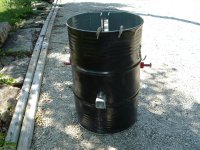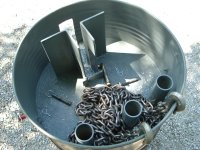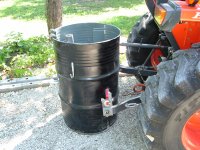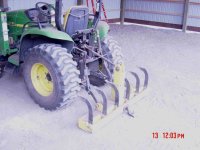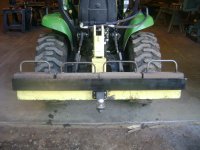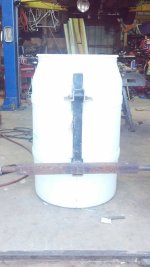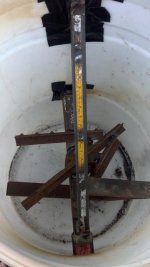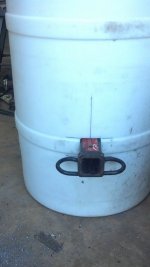boutym
Silver Member
Anyone have a simple way to calculate weight of a hunk of concrete based on the type of concrete used and any aggregate added to it? I'm wanting to construct a rear ballast for my SCUT for use when I don't have the backhoe mounted. I figure I can build something cheaper and more versatile than shelling out big bucks for suitcase weights since the needed weight will pretty much always be the same and I can incorporate a 2 inch receiver in the design for moving trailers and whatever around.
I figure I can weld up a frame that can be attached to the 3pt with some scrap and then embed this in the concrete. I did something similar for a JD 212 I have that just bolts onto the rear and it worked out great, but what it would weigh when finished was a WAG at best. Frankly, I still don't know what it weighs, but I know it is heavy enough that I ended up laying on the garage floor for a couple hours waiting for someone to come home after I felt something in my lower back pop loud enough to be heard when I was just trying to roll the thing. Heck, I even thought of just making some kind of bracket to hang the weight I have off the back of the SCUT, but it's not an easy on/off the Deere and the Deere gets used quite a bit in situations where the weight comes in handy.
I figure I can weld up a frame that can be attached to the 3pt with some scrap and then embed this in the concrete. I did something similar for a JD 212 I have that just bolts onto the rear and it worked out great, but what it would weigh when finished was a WAG at best. Frankly, I still don't know what it weighs, but I know it is heavy enough that I ended up laying on the garage floor for a couple hours waiting for someone to come home after I felt something in my lower back pop loud enough to be heard when I was just trying to roll the thing. Heck, I even thought of just making some kind of bracket to hang the weight I have off the back of the SCUT, but it's not an easy on/off the Deere and the Deere gets used quite a bit in situations where the weight comes in handy.
